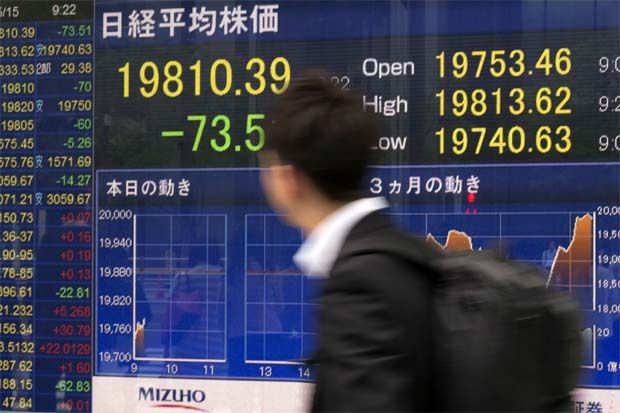SYDNEY: Asian shares regained some poise on Friday after a tough week in which the gathering risk of a U.S. rate rise lifted Treasury yields toward nine-year highs and boosted borrowing costs across the region.
Activity was mainly confined to book-squaring for the month and quarter end, and moves in markets were modest at best.
MSCI’s broadest index of Asia-Pacific shares outside Japan inched up 0.2 percent but was still down a sizable 2 percent for the week so far.
Japan’s Nikkei was off 0.2 percent, though South Korea managed to recoup 0.5 percent. Shanghai shares firmed 0.3 percent but were flat on the week.
Many markets in the region have been cold-shouldered this week as investors priced in a greater probability of a rate hike from the Federal Reserve in December.
Fed funds futures imply around a 73 percent chance of a move at the December 12-13 policy meeting.
As a result, yields on two-year Treasuries reached a near nine-year top before settling at 1.46 percent on Friday. They had been as low as 1.254 percent early in September.
Adding to the upward pressure was President Donald Trump’s proposals for steep tax cuts which, if passed, could benefit U.S. corporations’ profit margins.
The plan, however, lacked any detail on how it might be paid for and faced much opposition in Congress.
Still, a tax cut that made U.S. equities more attractive while lifting the dollar and Treasury yields would likely prove negative for emerging markets, particularly those that relied heavily on foreign investment.
The risk alone was enough to rattle share, bond and currency markets in Asia on Thursday, and they will remain vulnerable to headlines on the tax package as it moves through Congress.
DOLLAR REPRIEVE
The jump in Treasury yields proved a much-needed tonic for the U.S. dollar. Against a basket of currencies, the dollar index was up 0.14 percent on Friday at 93.217, to hold gains of 1.1 percent this week.
The euro hovered at US$1.1778, having bounced from a six-week trough of US$1.1715, but was still down 1.5 percent for the week so far. If it remains there, that would be the largest weekly loss since November 2016.
The dollar was also on track for its third week of gains on the Japanese Yen at 112.66, just off a peak of 113.26.
On Wall Street, the Dow had ended Thursday with a minor gain of 0.18 percent, while the S&P 500 added 0.12 percent and the Nasdaq was flat.
All three were at or near record highs, stirring concerns about rich valuations. The forward price-to-earnings ratio (P/E) on the S&P stood at 17.9 compared with its long-term average of 15.1, while the forward P/E on the Russell is 26.3 against an average of 21.3.
Important data on inflation from the European Union and the United States are due later in the session, along with economic growth figures in Canada.
Early readings on Chinese manufacturing are out on Saturday ahead of a week-long holiday in the Asian giant.
The EU also faces more political uncertainty on Sunday when Catalan separatists are set to defy Spanish efforts to block an independence referendum.
In commodity markets, oil prices were near to chalking up another weekly gain as investors wagered that efforts to cut a global glut are working and the demand outlook is improving.
Brent was 24 cents higher at US$57.65 a barrel, heading for a fifth weekly climb and a 10 percent gain for September. U.S. crude rose 1 cent to US$51.57 a barrel.




